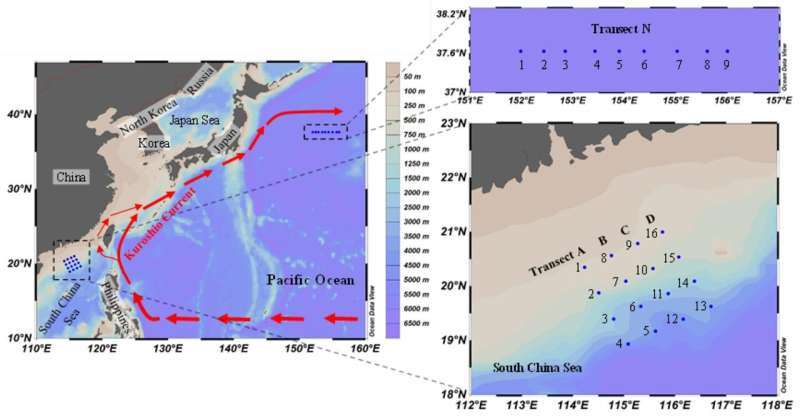Tintinnid ciliates can act as warm eddy bioindicators

Planktonic ciliates consist of tintinnid and aloricate ciliates. Tintinnid clliates are sensitive to environmental changes, thus they can act as effective bioindicators in different seas.
Mesoscale warm eddies are common in the South China Sea and western North Pacific, where they create a variety of physic-chemical environments and host diverse phytoplankton and mesozooplankton.
Dr. Wang Chaofeng from Prof. Zhang Wuchang's team at the Institute of Oceanology of the Chinese Academy of Sciences (IOCAS) investigated the impact of warm eddy on planktonic ciliate in the South China Sea and the western North Pacific.
The study was published in Ecological Indicators.
"An eddy retains the physical, chemical, and biological properties of its original water mass and is typically well-differentiated from its surrounding environment," said Dr. Wang.
Researchers found a similar hydrological environment with the isotherm and isohaline concaved characteristic in both the South China Sea and western North Pacific. All sampling depths were divided into warm eddy and reference areas, and more tintinnid species were found in warm eddies than in reference areas.
In addition, abundant tintinnids were divided into subsurface-peak and surface-peak groups. The temperature-salinity-plankton diagrams revealed that subsurface-peak group had obvious higher abundance in warm eddies than in reference areas, and thus they could act as warm eddy bioindicator species.
The researchers also found that ciliates had obvious high abundance in warm eddy subsurface layers in both the South China Sea and the western North Pacific.
As for vertical distribution patterns, a "bimodal-peak" pattern (high ciliate abundance in surface and 80 m layers) appeared in warm eddy-influenced areas of both the South China Sea and western North Pacific, which differed from the "surface-peak" pattern (high ciliate abundance in surface layers) in reference areas.
More information: Chaofeng Wang et al, Impact of the warm eddy on planktonic ciliate, with an emphasis on tintinnids as bioindicator species, Ecological Indicators (2021). DOI: 10.1016/j.ecolind.2021.108441
Provided by Chinese Academy of Sciences




















